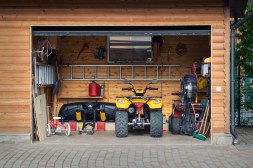The Ultimate Guide to Cleaning Your Equipment: Tackling Sap, Grass, and Debris
Maintaining your outdoor equipment is crucial for its longevity and performance. One of the most common challenges that users face is cleaning off sap, grass, and various debris that can accumulate over time. In this ultimate guide, we will provide you with effective methods and tips to keep your equipment in pristine condition.
Understanding the Types of Debris on Your Equipment
Before diving into cleaning techniques, it’s important to understand the types of debris you might encounter. Sap from trees can create sticky residue that attracts dirt; grass clippings can clog moving parts; while other debris like mud or leaves can lead to rust and deterioration if not removed promptly. Identifying these materials will help you choose the right cleaning method.

Gathering the Right Cleaning Supplies
To effectively clean sap, grass, and debris from your equipment, gather a few essential supplies: a soft-bristle brush or sponge for scrubbing; a bucket of warm soapy water (mild dish soap works well); rubbing alcohol or commercial sap removers for sticky residues; a hose or pressure washer for rinsing off dirt; and microfiber towels for drying. Having these tools ready will streamline your cleaning process.
Step-by-Step Cleaning Process
Start by turning off any power sources and removing any detachable parts from your equipment. Use a soft-bristle brush to gently scrub away grass clippings and loose dirt. For stubborn sap stains, apply rubbing alcohol directly onto the area with a cloth or sponge before scrubbing gently until it loosens. After tackling all debris types separately, rinse everything thoroughly with water to ensure no soap remains.
Preventative Maintenance Tips
To reduce future buildup of sap and debris on your equipment, consider implementing regular maintenance practices. After each use, take a few minutes to wipe down surfaces with a damp cloth to remove any stickiness or dirt while it’s still fresh. Additionally, storing your equipment in sheltered areas when not in use can help minimize exposure to tree sap and other environmental factors.
When to Seek Professional Help
If you find that certain spots are particularly challenging to clean or if there are signs of corrosion due to accumulated debris over time, don’t hesitate to seek professional assistance. Sometimes specialized cleaning products or techniques may be required which professionals are well-versed in handling.
Keeping your outdoor equipment clean is essential for its functionality and lifespan. By following this ultimate guide on tackling sap, grass, and other debris through understanding the materials involved, gathering appropriate supplies ,and maintaining preventive measures — you’ll ensure that your tools remain effective for years ahead.
This text was generated using a large language model, and select text has been reviewed and moderated for purposes such as readability.


